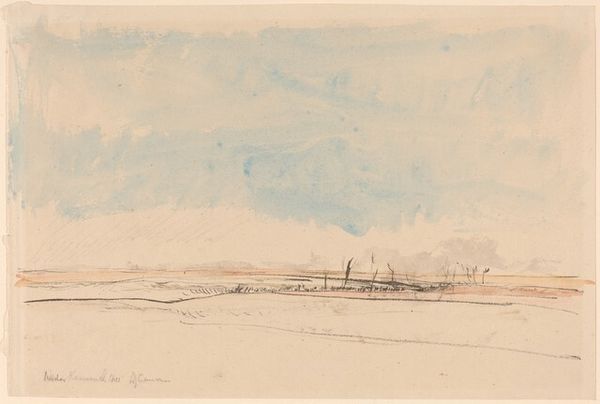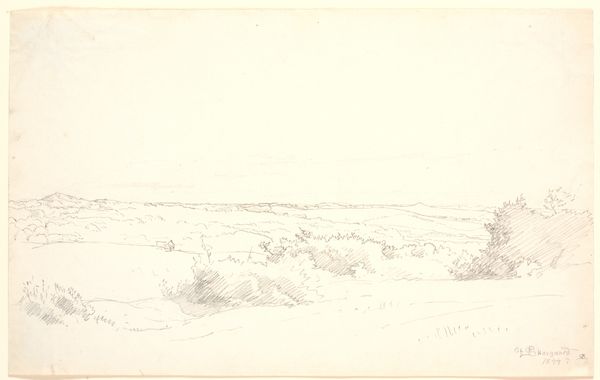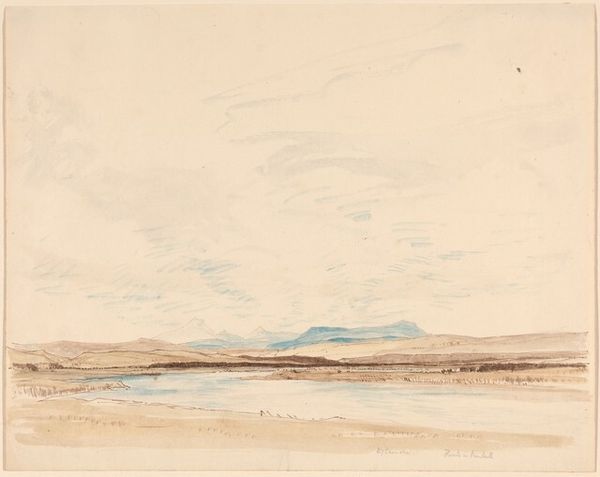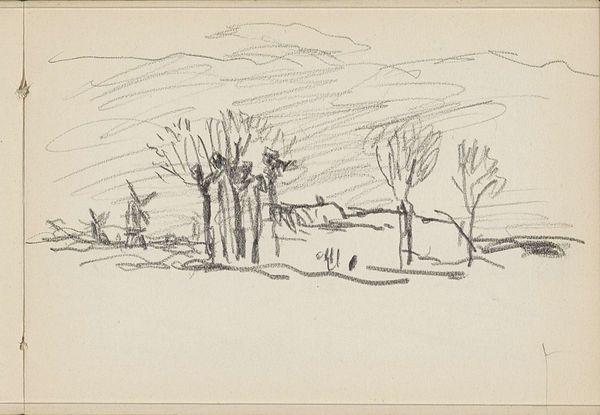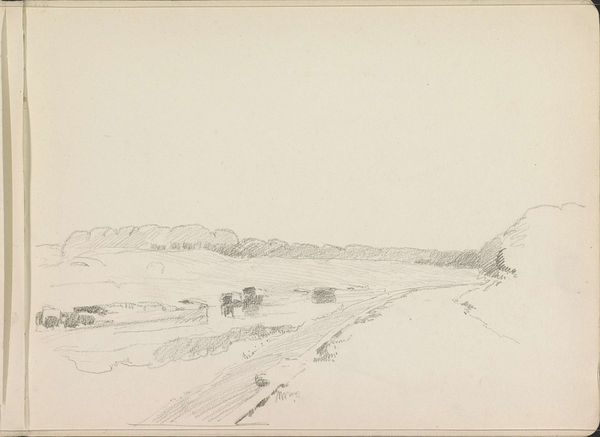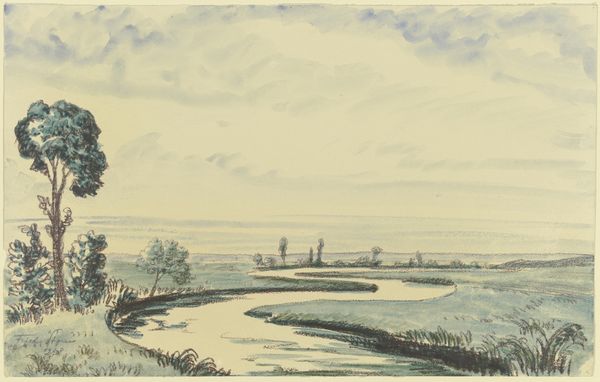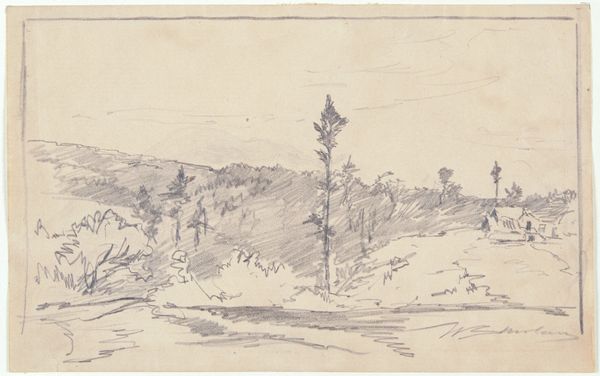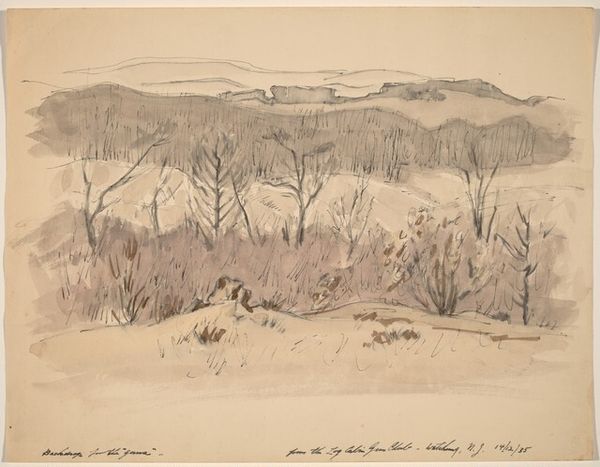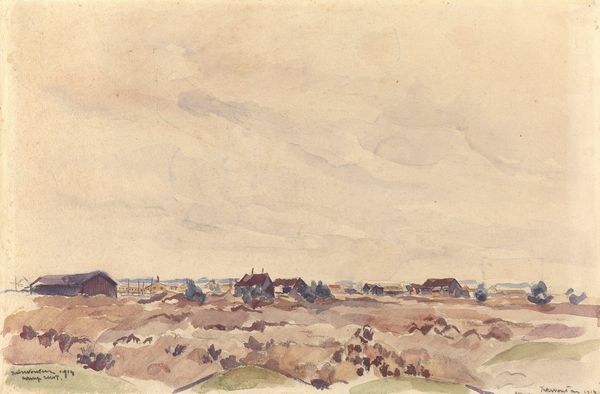
drawing, watercolor, pencil
#
drawing
#
ink drawing
#
impressionism
#
pencil sketch
#
landscape
#
watercolor
#
pencil
#
watercolor
Dimensions: overall (approximate): 24.3 x 37.7 cm (9 9/16 x 14 13/16 in.)
Copyright: National Gallery of Art: CC0 1.0
Curator: Before us, we have David Young Cameron's "The Road to Lens," a somber drawing rendered in pencil, ink, and watercolor. What catches your eye first about this bleak landscape? Editor: That pervading sense of devastation, absolutely. The sparse use of watercolor really amplifies the feeling that everything has been drained of its color and vitality. Look at the skeletal trees—the bare minimum of strokes, such bleak simplicity! What are your thoughts on the compositional layout? Curator: Indeed, the skeletal trees are a stark symbol of loss, but also, perhaps, of resilience. Their reaching upwards despite their broken state suggests a will to endure, aligning with Lens's history as a site of intense conflict and reconstruction. The composition leads my eye toward the horizon. It is far but almost a promised line of potential, bisecting a somber sky from equally devastated land. Editor: Reconstruction…yes. I’m drawn to how the material limitations and portability of drawing with pencil, ink, and watercolor shaped what an artist could document quickly on the front. We must consider, though, who had access to such materials in that devastated landscape and to what end were they recording. Curator: I appreciate that viewpoint. Those ruins might signify both destruction and an evolving identity for Lens as it picks up the pieces of tradition and place after tragedy. Editor: Exactly! The traces left on the page, the materials themselves – they carry their own narratives, shaped by conflict, available resources, and the stories they seek to tell about resilience through change. Curator: Ultimately, what stays with me is the sense of quietude, of the world holding its breath. The image functions as an archive that preserves not just a view, but also the burden of historical trauma. Editor: And for me, how simple means evoke the harshest of experiences; pencil, ink, and watercolor holding an uneasy yet important place in visualizing and comprehending devastation's reach and resonance.
Comments
No comments
Be the first to comment and join the conversation on the ultimate creative platform.
